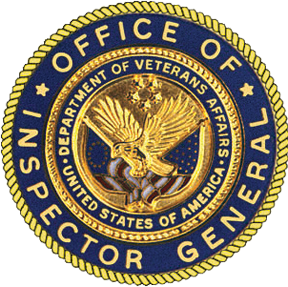Review of Clinical Contact Centers to Assess Leadership and Oversight
Report Information
Summary
VHA’s VA Health Connect modernization initiative of 2020 was to transform medical facilities’ call centers into regionally managed units called clinical contact centers. The centers were expected to integrate operations and provide veterans 24-hour access to four core services by December 31, 2021: primary care scheduling, pharmacy support, clinical triage, and virtual provider care. Center staff were to answer at least 95 percent of calls promptly, answer at least 80 percent of primary care scheduling and pharmacy calls within 30 seconds, and answer at least 80 percent of clinical triage calls within 120 seconds.
The OIG team conducted its review from October 2024 through July 2025, with a focus on operations during FY 2024, and found that only clinical triage met both standards; it exceeded the call timeliness standard, with 82 percent of calls answered within 120 seconds. Most centers had not fully integrated operations by September 2022, and some did not provide 24-hour pharmacy or scheduling services in FY 2024. Additionally, some medical facilities did not route all incoming calls to their regional contact center.
The review team found that centers did not always adequately oversee schedulers, monitor the time schedulers spent on individual calls or on follow-up, or monitor the percentage of time schedulers were unavailable—all of which affect call abandonment rates and timeliness.
In December 2024, centers were allowed to request a temporary exemption from VA Health Connect requirements, but the waiver policy did not specify what information to include with the request or require VHA’s chief operating officer to review waivers.
To address the problems identified, the OIG made nine recommendations. VHA concurred with eight and concurred in principle with one.
Require the chief operating officer to direct the Veterans Integrated Service Network directors to fully integrate the core services in accordance with policy to improve operational efficiencies and access for veterans.
Establish a process requiring medical facility directors to coordinate with the Office of Integrated Veteran Care and the clinical contact centers before setting up or maintaining a local phone queue for services the clinical contact center provides.
Require the Office of Integrated Veteran Care to direct the clinical contact center leaders to determine if schedulers are arbitrarily ending calls in the telephone system to remain in after-call work status longer than needed to reduce the number of calls routed to them.
Require the Office of Integrated Veteran Care to review and address inconsistencies in guidance on schedulers’ availability.
Direct clinical contact center leaders to routinely evaluate and, if needed, address schedulers’ handle time and availability time to improve performance and reduce inefficiencies.
Direct the Office of Integrated Veteran Care to include schedulers’ handle time and availability time as part of VA Health Connect’s annual performance plans to make sure clinical contact centers monitor and address these areas.
Make sure the Office of Integrated Veteran Care and chief operating officer evaluate VA Health Connect staffing for scheduling and, if necessary, reallocate staff so all clinical contact centers provide core services and meet required performance standards for scheduling.
Direct the Office of Integrated Veteran Care to formalize and clarify internal waiver guidance and include examples of the specific evidence that would be required for a clinical contact center not to provide 24-hour services—such as exploring the use of other strategies like routing calls to another service or partnering with other centers to provide coverage.
Ensure the assistant under secretary for health for the Office of Integrated Veteran Care and chief operating officer periodically review the clinical contact center waiver submissions and the planned actions to comply with VA Health Connect requirements.
